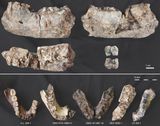A miniature version of an atomic fountain clock has been unveiled by researchers at the UK’s National Physical Laboratory (NPL). Their timekeeper occupies just 5% of the volume of a conventional atomic fountain clock while delivering a time signal with a stability that is on par with a full-sized system. The team is now honing its design to create compact fountain clocks that could be used in portable systems and remote locations.
The ticking of an atomic clock is defined by the frequency of the electromagnetic radiation that is absorbed and emitted by a specific transition between atomic energy levels. Today, the second is defined using a transition in caesium atoms that involves microwave radiation. Caesium atoms are placed in a microwave cavity and a measurement-and-feedback mechanism is used to tune the frequency of the cavity radiation to the atomic transition – creating a source of microwaves with a very narrow frequency range centred at the clock frequency.
The first atomic clocks sent a fast-moving beam of atoms through a microwave cavity. The precision of such a beam clock is limited by the relatively short time that individual atoms spend in the cavity. Also, the speed of the atoms means that the measured frequency peak is shifted and broadened by the Doppler effect.
Launching atoms
These problems were addressed by the development of the fountain clock, in which the atoms are cooled (slowed down) by laser light, which also launches the atoms upwards. The atoms pass through a microwave cavity on the way up, and again as they fall back down. The atoms travel at much slower speeds than in a beam clock. The atoms spend much more time in the cavity and therefore the time signal from an atomic clock is much more precise than a beam clock. However, long times result in greater thermal spread of the atomic beam – which degrades clock performance. Trading-off measurement time with thermal spread means that the caesium fountain clocks that currently define the second have drops of about 30 cm.
Other components are also needed to operate fountain clocks – including a vacuum system and laser and microwave instrumentation. This pushes the height of a typical clock to about 2 m, and makes it a complex and expensive instrument that cannot be easily transported.
Now, Sam Walby and colleagues at NPL have shrunk the overall height of a rubidium-based fountain clock to 80 cm, while retaining the 30 cm drop. The result is an instrument that is 5% the volume of one of NPL’s conventional caesium atomic fountain clocks.
Precise yet portable
“That’s taking it from barely being able to fit though a doorway, to something one could pick up and carry with one arm,” says Walby.
Despite the miniaturization, the mini-fountain achieved a stability of one part in 1015 after several days of operation – which NPL says is comparable to full-sized clocks.
Walby told Physics World that the NPL team achieved miniaturization by eliminating two conventional components from their clock design. One is a dedicated chamber used to measure the quantum states of the atoms. Instead, this measurement is make within the clock’s cooling chamber. Also eliminated is a dedicated state-selection microwave cavity, which puts the atoms into the quantum state from which the clock transition occurs.
“The mini-fountain also does this [state] selection,” explains Walby, “but instead of using a dedicated cavity, we use a coax-to-waveguide adapter that is directed into the cooling chamber, which creates a travelling wave of microwaves at the correct frequency.”
The NPL team also reduced the amount of magnetic shielding used, which meant that the edge-effects of the magnetic field had to be more carefully considered. The optics system of the clock was greatly simplified and the use of commercial components mean that the clock is low maintenance and easy to operate – according to NPL.
Radical simplification
“By radically simplifying and shrinking the atomic fountain, we’re making ultra-precise timing technology available beyond national labs,” said Walby. “This opens new possibilities for resilient infrastructure and next-generation navigation.”
According to Walby, one potential use of a miniature atomic fountain clock is as a holdover clock. These are devices that produce a very stable time signal when not synchronized with other atomic clocks. This is important for creating resilience in infrastructure that relies on precision timing – such as communications networks, global navigation satellite systems (including GPS) and power grids. Synchronization is usually done using GNSS signals but these can be jammed or spoofed to disrupt timing systems.
Holdover clocks require time errors of just a few nanoseconds over a month, which the new NPL clock can deliver. The miniature atomic clock could also be used as a secondary frequency standard for the SI second.
The small size of the clock also lends itself to portable and even mobile applications, according to Walby: “The adaptation of the mini-fountain technology to mobile platforms will be subject of further developments”.
However, the mini-clock is large when compared to more compact or chip-based clocks – which do not perform as well. Therefore, he believes that the technology is more likely to be implemented on ships or ground vehicles than aircraft.
“At a minimum, it should be easily transportable compared to the current solutions of similar performance,” he says.
“Highly innovative”
Atomic-clock expert Elizabeth Donley tells Physics World, “NPL has been highly innovative in recent years in standardizing fountain clock designs and even supplying caesium fountains to other national standards labs and organizations around the world for timekeeping purposes. This new compact rubidium fountain is a continuation of this work and can provide a smaller frequency standard with comparable performance to the larger fountains based on caesium.”
Donley spent more than two decades developing atomic clocks at the US National Institute of Standards and Technology (NIST) and now works as a consultant in the field. She agrees that miniature fountain clocks would be useful for holding-over timing information when time signals are interrupted.
She adds, “Once the international community decides to redefine the second to be based on an optical transition, it won’t matter if you use rubidium or caesium. So I see this work as more of a practical achievement than a ground-breaking one. Practical achievements are what drives progress most of the time.”
The new clock is described in Applied Physics Letters.
The post NPL unveils miniature atomic fountain clock appeared first on Physics World.

















